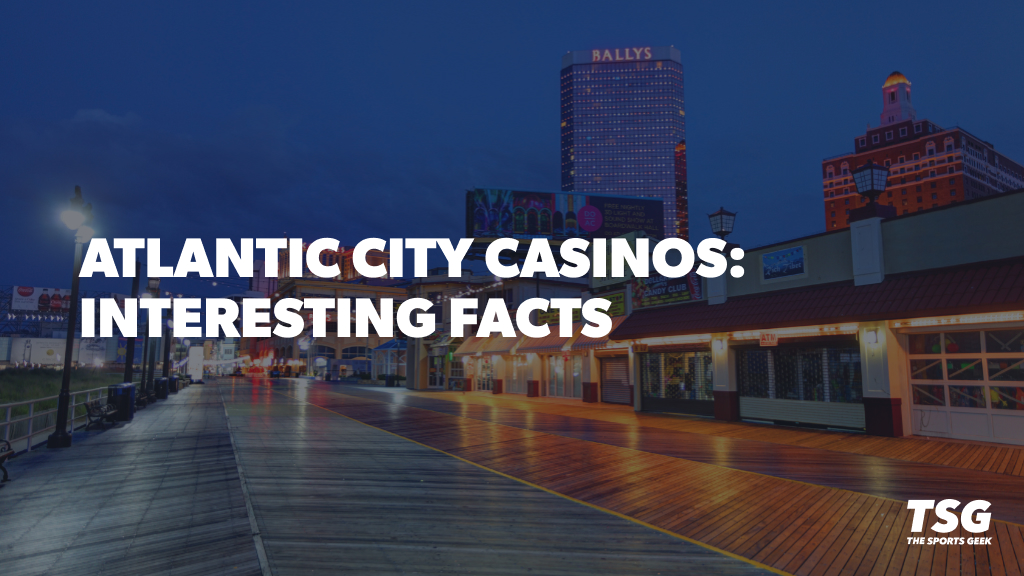
In a city rooted in gambling history, there are a variety of Atlantic City facts that you might find interesting! Home to some of the most recognizable casinos in the world, “America’s Playground” has many interesting tidbits on the shores of South Jersey.
I explore the most interesting facts about Atlantic City casinos that you might not have known, and perhaps one or two you do know!
Now, let’s dig deeper into the facts and learn more about what makes Atlantic City an interesting city:
1. Trump Taj Mahal Most Exorbitant Casino Ever Opened
At a cost of $1.1 billion, the Trump Taj Mahal was the most expensive casino that was opened in the world at the time, in 1990. In an attempt to attract the wealthiest and most distinguished guests, Trump wasn’t afraid to balloon the budget.
The chandeliers for the facility alone cost $16 million! Despite an extravagant opening, which included Michael Jackson, the casino was already in crippling debt. Only 16 days into its opening, the Trump Taj Mahal had deficits as high as $1.7 million, per the New Jersey Division of Gaming Enforcement.
In 1991, the casino filed for Chapter 11 bankruptcy after being unable to overcome the mounting losses. The record-breaking cost to build and open the Trump Taj Mahal was ultimately too much to keep its head above water.
2. Resorts International First Legal Casino Opened Outside of Nevada
72 years after the first legal casino was opened in Nevada, casino gambling finally spread outside of the state’s limits. Over on the East Coast in Atlantic City, Resorts International marked the first time a casino was opened outside of Nevada.
For roughly seven decades, Las Vegas had a stranglehold and monopoly on gambling in the United States. The grand opening of Resorts International launched a competitive war against Las Vegas, something that “Sin City” had never experienced before.
By 1990, 12 casinos were in operation in Atlantic City. Although the city was never able to surpass Las Vegas’ revenue, Resorts International represented the beginning of an explosion of casino openings throughout the country.
In 2025, 44 states have at least one commercial or tribal casino. Additionally, there are a number of online casinos available across the country.
3. Gambling Legalized to Bolster Local Economy
The wheels were put in motion for Resorts International’s opening on November 2, 1976. After a failed vote in 1974, a referendum to legalize gambling passed narrowly on November 2, 1976, with a vote of 1.5 million for versus 1.14 million against.
boardwalk at dawn, atlantic city, new jersey, 1978 pic.twitter.com/X9olIosStB
— old roadside pics (@oldroadside) July 7, 2023
On June 2, 1977, Governor Brendan T. Byrne officially signed the Casino Control Act into law. The measure was initially spurred by an attempt to stimulate the faltering economy. In the 1960s through the 70s, Atlantic City had fallen into financial ruin, with high unemployment, crime, decay, and dwindling tourist numbers.
Atlantic City took a page out of Las Vegas’ playbook and aimed to turn it into a year-round destination for tourists. With a regional monopoly on gambling on the East Coast, Atlantic City enjoyed a wave of visitors looking to play their luck in the casinos.
According to the Federal Reserve Bank of Richmond’s study by Adam Scavette, the legalization had a positive impact on economic growth. For instance, in five years from 1977 to 1982, there was a 26% increase in employment, wages were up 9%, personal income was up 9%, and the prices of housing jumped by 19%!
Additionally, from 1977 to 1990, employment rose by a whopping 45%. Atlantic City has had to navigate several ups and downs over the last four decades, but overall, the casino industry has assisted in keeping the community alive.
4. The MIT Blackjack Targeted Atlantic City First
While Atlantic City’s casino landscape was just getting started in the late 1970s, there was a team of young students at MIT that saw an opportunity.
In 1979, the now famous MIT Blackjack Team was founded with a group of six students, led by Bill Kaplan, to use card counting to profit on the blackjack tables. Before expanding their footprint throughout North America, they used Atlantic City as a home base to fine-tune their skills and put their plan into action initially.
They played at various casinos in Atlantic City, with a team of spotters and big players to beat the house for millions. By the time the team disbanded in roughly 2000, the MIT Blackjack Team had won an estimated $50 million to $100 million.
5. First-of-its-Kind Casino Loyalty Program Launched
In 1982, Atlantic City Sands had a revolutionary idea: create a casino loyalty program to reward patrons for gambling more. The concept of the Galaxy Slot Club was simple. Gamblers would receive special invites to events and parties hosted by the casino in return for their play.
Moreover, the casino distributed gold lapel pins to members for bragging rights and to identify the “VIPs” on the gaming floor. This concept is widely used at nearly every casino around the world.
Based on the original Galaxy Slot Club, today’s casino loyalty programs offer discounts and free rooms, food, and several other complimentary gifts for reaching higher tiers.






You must be logged in to comment. Don't have an account? Sign up today.